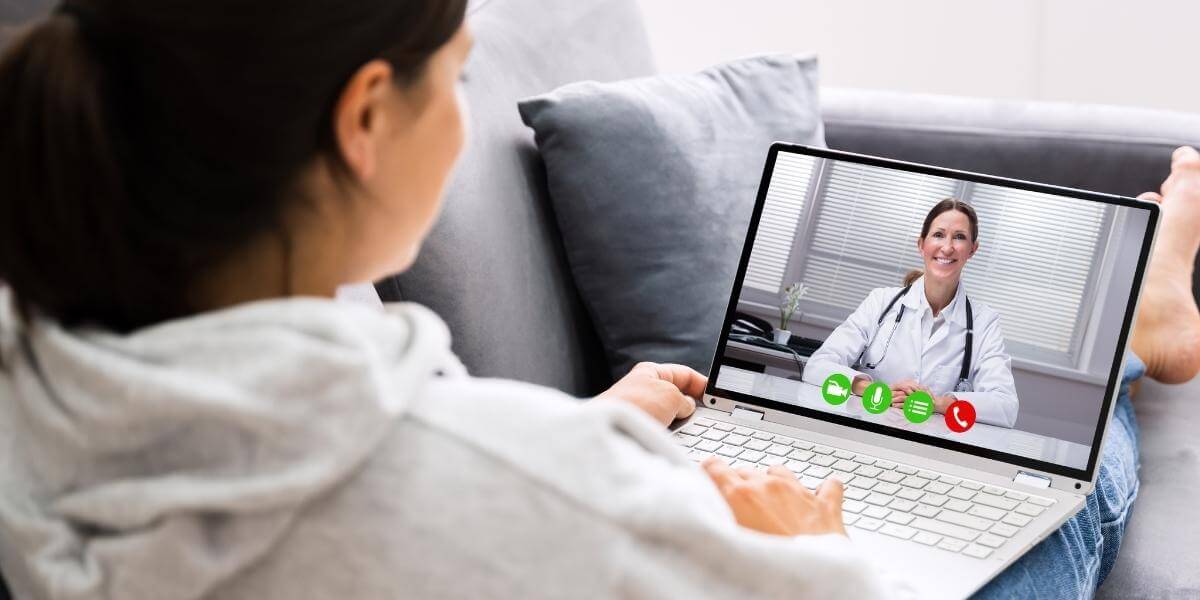One of the most significant barriers to patient care is access. The time between finding a problem and addressing it can be excruciating, especially for patients. Remote situations or physicians needing to verify documentation of tests or rerun tests and treatments greatly impacts this time. Telehealth with secure document storage and transmission helps solve the problem of healthcare access and improve physician communication, ultimately giving patients better and faster care.
More Efficient Forms of Communication
The past way to share important information with patients was by phone — and your office may still be doing it that way. Phone communication requires getting in touch with the person, potentially leaving a message, and waiting for a callback. This phone tag game extends the time for patients to get test results or discuss other important information.
Telehealth allows you to communicate through instant or direct messaging to provide information as you have it and patients to see it whenever they check their messages. Communication is much faster and can continue beyond regular hours. Using private messaging over a telehealth platform ensures the messages are secure and only your patients and their care team can access them.
Telehealth can also send and store secure documents for patients to review. You can conduct visits through video, texting, chat applications, or phone calls.
Remote Health Visits
Telehealth gives physicians the ability to treat patients remotely, which removes access barriers for many patients and helps improve care. It can also reduce the length of visits, as remote visits allow skipping travel to and from a facility and cut out wait times. Remote visits also allow for faster patient intake. These remote visits can improve care by:
- Providing access to specialists
- Providing ongoing care for chronic conditions,
- Helping carry out medication management
- Improving pain management
- Offering non-emergency urgent care
- Giving access to comprehensive care, including physical, mental, and occupational health
- Reviewing diagnostic testing
Medical Information
Telehealth can streamline the sharing of medical information. Physicians, labs, and other medical professionals can share test results and additional information through virtual platforms for patients to check as soon as the results are available or whenever it’s convenient for them. Since this type of information sharing is flexible, patients could check their account any time of day or night rather than wait for business hours to return a phone call.
Telehealth platforms also allow physicians and patients to message each other back and forth instead of relying on phone calls and messages. They could also set up appointments for video visits to discuss diagnostic results when needed.
Virtual sharing of health information can improve patients’ access and remove certain barriers. For instance, patients can see results directly from a lab or various specialists rather than waiting for their primary care physician to share results. The physician can then discuss the results later, either through a telehealth appointment or an in-person visit.
Telehealth In Conjunction With In-Person Visits
The best way to improve healthcare access for all patients is to provide telehealth and in-person options. Some people will find telehealth more convenient, reducing time and giving better access to care in many situations. However, challenges come with telehealth. Not everyone prefers using technology for their healthcare. Some people may not have the needed technology, making in-person visits more accessible, however, this is quickly becoming less common. It may help some people to receive medical documentation online, while others may need to come in person to review it.
When you use virtual healthcare, provide good telemedicine to ensure that patients have the best experience possible and gain the intended benefits of going virtual. For good telemedicine:
- Deliver a good user experience by ensuring a good internet connection on your end.
- Offer patients communication options to fit their preferences, such as video, phone calls, texting, or chat sessions.
- Make sure your telehealth experience makes care more convenient rather than more complicated.
- Use a platform that keeps information secure.
When you ensure that your communication is warm and focused on the patient, you can create an environment for your patient to feel comfortable and open up. This improved communication encourages patients to express questions, concerns, and needs, helping them gain access to better care overall. This format encourages physicians to avoid distractions and listen carefully, facilitating comprehensive care.
Learn more about how telehealth can remove barriers and improve healthcare access through our upcoming ViTel Signs episode on August 9, featuring Dr. Nima Alipour, founder of Alipour Medical Corp and occupational physician.




